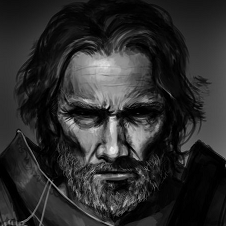-
Posts
38,430 -
Joined
-
Last visited
Content Type
Profiles
Forums
Events
Gallery
Everything posted by Ace-Garageguy
-
I'll betcha anything that's p-shopped. Flying close formation with multiple aircraft relies on constant visual input to the pilots from the other aircraft's relative positions. I really don't believe you can do it on remote TV monitors and RC joysticks. Even flying loose formation with a single other aircraft is a challenge that really raises your blood pressure, and I doubt that, unless three of those drones are slaved to the lead ship (and that would only duplicate control inputs of the lead ship...not make the minuscule corrections necessary for each individual ship) it's real. I could be wrong.
-
Probably an element of showoff in there. If so, I apologize. But honestly, one of my primary concerns is about the state of this country's general scientific ignorance. You guys are doing well above average, and that's a good thing. That's why I posted the page results with the link to an important article about science and education. If you don't understand why the lights come on when you flip the switch, or the fact that overuse of antibiotic soaps is causing antibiotic-resistant strains of bacteria to evolve and make people in hospitals sicker (sometimes die), or how the spinoffs from the space program have benefited mankind as a whole, or what the operational theories are on both sides of the global-warming controversy, or how various forms of energy are produced...if you don't have sufficient understanding of science to grasp these relatively simple concepts, you have no business voting. We live in an age where a well-informed science-savvy populace is a critical necessity for policies that make rational sense to be implemented by government, and for representatives who are themselves informed and rational to be elected. Topic disclaimer: I believe my remarks to be in the "civics" vein, not the forbidden "politics".
-
13 Science and Technology Knowledge Quiz Results You answered 13 of 13 questions correctly. This quiz is a joint effort between the Pew Research Center and Smithsonian magazine. See below how your results compare with the 1,006 randomly sampled adults that took part in our national survey and review how you responded to each question. For more findings from the survey, read "Public's Knowledge of Science and Technology." You scored better than 93% of the public and the same as 7%.
-
Now that's funny.
-
Drilling a small hole in the side of a small part that won't be seen and sticking a paperclip, toothpick or wire in it for spray-painting works well for me. Make sure whatever you use is a tight fit. I've had paint wick in the hole and lube it just enough so the part falls off and is lost forever. I also have a pair of vise-grips handy to hold the part by the handle (so you can put it down) while it dries.
-
Occasionally, when one is trying to help someone who's seeking technical advice, and one gives a correct, concise, carefully considered and carefully worded answer based on education in the subject as well as a lifetime of personal hands-on experience, and the one who asked the question is confused by a deluge of "opinions" from people who might have "heard" somewhere or "knew someone who did such and such", it can be helpful to state one's qualifications for providing a correct answer.
-

"mystery" parts and poor instructions
Ace-Garageguy replied to 62rebel's topic in General Automotive Talk (Trucks and Cars)
Yup. Building models as a kid most definitely gave me a leg up when I started working on real machines, first for fun and later on for a living. Having the parts named correctly on the instruction sheets and seeing how they fit together on a model and getting an idea of what they do (especially if you're interested enough in the real ones to read the real-thing mags too) is the basis of a pretty good introductory technical education. -
Beautiful. When these big-scale kits are done well, they really have a lot of impact. Well done.
-
OK then. TRY SAGE IN CORNBREAD
-

Molding lines?
Ace-Garageguy replied to Sidney Schwartz's topic in Model Building Questions and Answers
I personally like 180 for doing this kind of work. It cuts quick but doesn't leave really horrible sanding scratches. 400 after that if I'm going to use a high-build primer, and 600 or finer if I'm using a non-high-build product. I'll even go as coarse as 80 grit for doing heavy bodywork, rough-shaping bondo quickly. -

Suppose there's an IRS under there?
Ace-Garageguy replied to Greg Myers's topic in General Automotive Talk (Trucks and Cars)
I like trains. -

Suppose there's an IRS under there?
Ace-Garageguy replied to Greg Myers's topic in General Automotive Talk (Trucks and Cars)
I don't think we (baby boomers...god I hate that term) really can take credit for that, any more than we can take credit for transistors, early computers or the real space program. That was all the generation before us. But this fella probably did more to change the world...well, sorta...than anyone since the Manhattan Project guys. -

Suppose there's an IRS under there?
Ace-Garageguy replied to Greg Myers's topic in General Automotive Talk (Trucks and Cars)
Yeah, and like, how many of him are there for every one of these? Don't get me wrong though. My generation isn't any smarter. Who do you think made the horrific mess the world is in today, anyway? My generation of short-sighted hypocrites, that's who. -

Suppose there's an IRS under there?
Ace-Garageguy replied to Greg Myers's topic in General Automotive Talk (Trucks and Cars)
What do muscle cars have to do with anything? All old soon-to-be-dead geezers are into muscle cars I guess? All the hot-rods I build for a living, and all the sports cars I build for myself...and even my old beater truck...will outhandle any of the silly "stanced" crapp with stupidly excessive negative camber. But it's okay. You guys want cars that destroy tires instantly and won't stop or corner...fine by me. -

Suppose there's an IRS under there?
Ace-Garageguy replied to Greg Myers's topic in General Automotive Talk (Trucks and Cars)
No need to underestimate it. It's pretty self-evident. -

Molding lines?
Ace-Garageguy replied to Sidney Schwartz's topic in Model Building Questions and Answers
Nobody has mentioned it yet, so I will. You need to use files and / or sandpaper with a hard backing (stuck on something flat or rolled around something round with a radius similar to the radius you're working in) to effectively cut those mold parting-lines down without taking off too much material in adjacent areas. Unsupported sandpaper isn't too selective about what it cuts, and will take plastic off next to the lines too, which you really don't want. This can lead to wavy looking body panels. If you use files or sandpaper on some kind of hard backing, you'll find you can control it better, and "shave" the high areas without getting into the low areas and making things worse. Once you have the lines removed, THEN you can use your sandpaper unsupported to smooth everything out. Beware of shooting a lot of primer too. You can fill and blur surface details that should remain crisp pretty quickly -
Finally got the 2001 PT Cruiser from-hell to pass emissions with the onboard OBD II system happily reading everything within normal parameters. The owner has been getting warnings from various local constabularies for having an expired tag (an annual emissions test is a prerequisite for having your tag renewed here and there's no sniffer-test option as some states have in case the OBD system is glitchy) and has had all the paperwork in the car to slip the noose, but it's been a real stress-maker for her. Frustrating for me too, spending every weekend since I repaired everything the last bunch of chimps did to it that resulted in it first blowing the head gasket and then stripping its timing belt thousands of miles early. I've been chasing glitches in wiring, sensors, and a computer that thought the cat was failing when it wasn't. Little car is clean, tagged and legal now, and I'm done. Yippee !! Taking the rest of this beautiful sunny day to work at home, clean up some paperwork, lay out the harness and computer reflash for the LS-powered '47 Caddy I'm building for Mills, and GO FOR A LONG WALK !!! (Might take a nap too. Don't tell anybody)
-

Suppose there's an IRS under there?
Ace-Garageguy replied to Greg Myers's topic in General Automotive Talk (Trucks and Cars)
IF the axle was broken at the inboard end and IF the outer bearing was ground to dust and IF the car was overloaded and leaning to the right (which the old Ford appears to be if you look carefully) you could probably get that much apparent camber on one side. I shoulda been more specific. -

Suppose there's an IRS under there?
Ace-Garageguy replied to Greg Myers's topic in General Automotive Talk (Trucks and Cars)
Good for you !! You'll have to spend every cent you make flipping burgers or changing oil for buying tires every week, but good for you !! Never EVER let some old geezer's "views" about the real-world engineering of vehicle dynamics and handling interfere with your right to express your follow-the-idiot-herd look-at-me suspension setup ideas.
